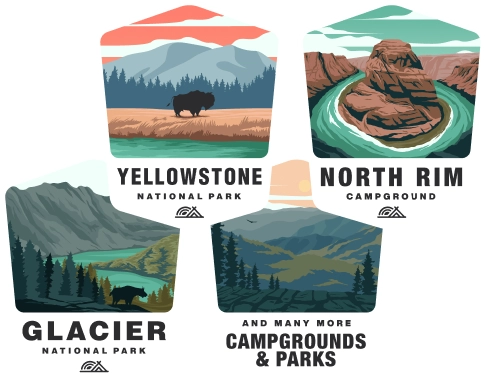Camping at Big Eddy Park
Overview of Big Eddy Park
Big Eddy Park is a popular camping and recreation area often sought after by outdoor enthusiasts. Information on this park can vary depending on its specific location since "Big Eddy" could refer to more than one park around the world. Assuming it is a generic park with this name, here are important camping details one might need to know.
Location
Big Eddy Park is usually situated near a large body of water, such as a river or a lake, which is how it typically derives its name (an "eddy" is a circular movement of water causing a small whirlpool).
Campsite Options
- Tent Sites: Often Big Eddy Park will have designated areas for tent camping, possibly along the water's edge for scenic views.
- RV Sites: Some parks offer RV sites with varying levels of service from full hookups (water, electricity, and sewer) to none.
- Group Sites: Larger sites for group gatherings are sometimes available for organizations or family reunions.
Amenities
- Restrooms: Facilities such as flush toilets or vault toilets may be provided.
- Showers: These may be available on-site, but could be coin-operated or may require an additional fee.
- Potable Water: Drinking water is an essential service, so check for availability.
- Picnic Areas: Often parks provide picnic tables and fire pits or grills at each campsite.
- Trash Disposal: Many parks stress a “pack it in, pack it out” policy, but some may have trash services.
Activities
- Water Recreation: Boating, fishing, and swimming are common activities if located near water.
- Trails: Hiking, biking, and walking trails are amenities for park visitors to explore.
- Wildlife Viewing: Big Eddy Parks are often rich in wildlife, offering good opportunities for bird watching or spotting local fauna.
Reservation and Fees
- Advance Booking: Some parks require reservations, especially during peak camping season.
- Fee Structure: Campsite fees may vary with the type of site and amenities it offers.
Safety and Regulations
- Campfires: Check current fire regulations as they can change with weather conditions.
- Wildlife Safety: Proper food storage and disposal to deter wildlife from entering the campsite are critical.
- Fishing Regulations: If you plan on fishing, make sure you are aware of local licensing requirements and regulations.
- Water Safety: Wear life jackets and be aware of water conditions if partaking in water activities.
Accessibility
- Disabled Access: Some sites are designed to be accessible for visitors with disabilities, but it’s best to check beforehand.
- Access Roads: The condition of the roads leading to the park can vary; some may be accessible only by 4-wheel drives or are seasonally closed.
Local Attractions
- Points of Interest: Look out for any notable geographic features, local landmarks, or historical sites.
- Nearby Services: Research nearby towns for services such as gas stations, grocery stores, and emergency services.
Contact Information
- Park Office: A contact number for the park office is useful for obtaining current information and in case of emergency.
Conclusion
For the most accurate and updated information, contact the park directly or visit their official website (if available), especially if you are planning to visit during peak seasons or have specific needs and requirements.
Tip: Always check for recent reviews or tips from fellow campers for more insights on what to expect during your camping trip at Big Eddy Park.
